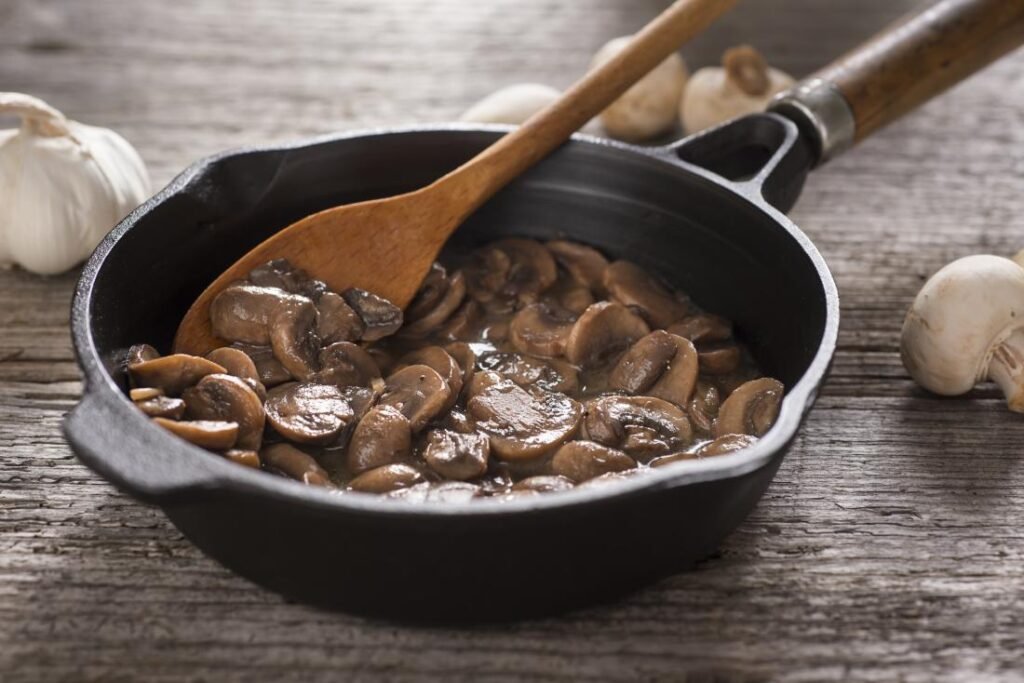The glutathione your body requires is produced by your body, but sometimes your levels may be low. It is naturally present in foods like garlic and kale. These natural ways to increase glutathione levels will help you. One of the most significant and powerful antioxidants in the body is glutathione. Antioxidants are chemicals that fight the body’s free radicals to lessen oxidative stress.
Your body produces glutathione, but the majority of antioxidants are found in the foods you consume. The three amino acids glutamine, glycine, and cysteine make up the majority of it. Numerous factors, such as a poor diet, chronic illness, infection, and ongoing stress, may cause your body’s glutathione level to drop.
As people age, glutathione levels are likewise known to decline. It is crucial to keep your levels of this antioxidant at appropriate levels. The top natural methods for raising glutathione levels are described below.
Tips To Increase Glutathione Levels

1. Eat Sulphur-Rich Foods
Some plant and protein diets naturally contain sulphur, one of the natural ways to increase glutathione levels. It is essential to the structure and function of key proteins and enzymes in the body. Notably, sulphur is necessary for the synthesis of glutathione. Methionine and cysteine are two amino acids that contain sulphur. Its main source is dietary proteins such as those found in cattle, fish, and chicken.
But cruciferous vegetables, including watercress, broccoli, cauliflower, kale, mustard greens, and Brussels sprouts, are also vegetarian sources of sulphur. Numerous studies on humans and animals have shown that eating vegetables high in sulphur can reduce oxidative stress by increasing glutathione levels.
Allium vegetables, such as onions, garlic, and shallots, also raise glutathione levels; this is probably because they contain sulphur-containing chemicals. Glutathione production requires sulphur. Thus, be careful to consume allium and cruciferous vegetables together with sulphur-rich meats like beef, fish, and chicken.
2. Have More Vitamin C
There are several foods that contain water-soluble vitamin C, including fruits and vegetables. Citrus fruits, papayas, kiwis, bell peppers, and strawberries are foods high in vitamin C. This vitamin serves as an antioxidant to protect cells from oxidative damage, among many other functions. Also, it regulates the body’s glutathione and other antioxidants.
Scientists have found that vitamin C may help raise glutathione levels by sparing glutathione by attacking free radicals first. Additionally, they discovered that vitamin C aids in glutathione reprocessing by transforming oxidized glutathione back into its active form. In fact, scientists have shown that supplementing with vitamin C raises glutathione levels in healthy people’s white blood cells.
Adults who took 500–1,000 mg of vitamin C daily for 13 weeks increased their glutathione levels in white blood cells by 18%, according to one study. Glutathione in red blood cells rose 47% when 500 mg of vitamin C tablets were taken daily, according to another study.
Nevertheless, vitamin C supplements were used in these investigations. Foods may not have the same impact as supplements, which are concentrated forms of the vitamin. To find out whether consuming foods that contain vitamin C may raise glutathione levels, further study is required.
3. Include Foods High In Selenium In Your Diet
In response to the question of how to increase glutathione levels, which are necessary for glutathione action, selenium is a necessary mineral. The best sources of selenium include Brazil nuts, brown rice, cottage cheese, fish, chicken, and organ meats.
Increasing your selenium intake may help maintain or even boost your body’s glutathione supply. The Recommended Dietary Allowance (RDA) for selenium is 55 micrograms per day for adults. The amount needed to maximize the synthesis of glutathione peroxidase determines this.
In one study, forty-five patients with chronic renal disease were examined to see how selenium supplementation affected them. For three months, each of them was given 200 mcg of selenium every day. It’s interesting to note that their glutathione peroxidase levels considerably rose.
According to a different study, hemodialysis patients’ glutathione peroxidase levels rose when they took selenium supplements. Once again, supplements rather than meals high in selenium were used in the aforementioned research.
It’s also important to keep in mind that the recommended upper consumption limit (UL) is 400 mcg per day. Due to the possibility of toxicity, speak with your doctor regarding selenium supplements and dose. The majority of healthy people will have enough selenium and, therefore, excellent glutathione levels if they eat a balanced diet rich in foods high in selenium.
4. Have Glutathione Rich Foods
The human body not only produces glutathione, but one can also obtain it through diet. Okra, spinach, avocados, and asparagus are some of the most plentiful dietary sources. However, glutathione from food is not efficiently absorbed by the human body. Moreover, cooking and storage conditions might lower the quantity of glutathione in food.
Although they have less of an impact on increasing glutathione levels, foods high in glutathione may help lower oxidative stress. A non-experimental research, for instance, found that those who ate the most meals high in glutathione were less likely to get oral cancer.
In the end, further investigation is necessary to completely comprehend how meals high in glutathione affect oxidative stress and glutathione levels. The body does not fully absorb dietary glutathione. However, consuming foods like avocados, spinach, and okra that are naturally high in glutathione may help reduce oxidative stress.
5. Include Whey Protein in Your Diet
The natural ways to increase glutathione levels in your body are dependent on certain amino acids. One especially significant amino acid that is involved in glutathione production is cysteine. Glutathione levels may be raised by consuming meals rich in cysteine, such as whey protein.
This assertion is really well supported by data, since several studies have shown that whey protein may raise glutathione levels and so lessen oxidative stress. Cysteine, found in whey protein, aids in sustaining sufficient glutathione synthesis. Whey protein may therefore aid in raising your levels.
6. Try Turmeric
Turmeric is a brilliant yellow-orange plant that is often used as a spice in Indian cookery. In India, the herb has been used medicinally since ancient times. Turmeric’s main ingredient, curcumin, is most likely what gives it its medicinal properties.
Turmeric extract has a much higher concentration of curcumin than the spice itself. Numerous investigations conducted on animals and in test tubes have shown the capacity of turmeric and curcumin extract to raise glutathione levels.
Researchers come to the conclusion that turmeric’s curcumin may help restore sufficient glutathione levels and enhance glutathione enzyme function. You would need to take turmeric extract to see an increase in glutathione levels since it would be extremely difficult to consume the same quantities of curcumin with turmeric spice.
Read More: 9 Effects of Coconut Oil on Your Health
7. Get Enough Sleep
Overall health depends on getting a good night’s sleep. Remarkably, chronic sleep deprivation may lead to hormone abnormalities and oxidative damage. Moreover, studies have shown that persistent sleep deprivation may lower glutathione levels.
For example, research comparing the glutathione levels of 30 healthy people and 30 people with insomnia found that the glutathione peroxidase activity was significantly lower in the insomniacs. Sleep deprivation also lowers glutathione levels, according to many animal studies.
Therefore, knowing the answer to how to increase glutathione levels may be possible if you make sure you receive a decent night’s sleep.
8. Exercise Daily
Healthcare professionals and doctors have long advised regular physical exercise. It should come as no surprise that exercise improves your mental and physical well-being. A recent study reveals that exercise is also effective in maintaining or raising antioxidant levels, notably glutathione.
The greatest increase in glutathione occurs when cardio and circuit weight training are combined, as opposed to when either is done alone. Overtraining without proper rest and nutrition, however, may put athletes at risk for reduced glutathione production. As a result, be sure to gradually and sensibly add physical exercise to your daily routine.
9. Limit Alcohol Intake
It should come as no surprise that excessive and long-term alcohol use is linked to several negative health impacts. Alcoholism is often linked to illnesses, including pancreatitis, liver cirrhosis, and brain damage. Another negative consequence of alcoholism that is less well recognized is lung damage.
This is probably connected to the lungs’ declining glutathione levels. Glutathione is necessary for the healthy operation of the lungs’ tiny airways. Glutathione levels in healthy lungs may really be up to 1,000 times higher than in other bodily organs.
The oxidative stress brought on by long-term alcohol use is most likely the source of glutathione depletion in alcoholics’ lungs. Lung glutathione levels have been found to drop by 80–90% in people who regularly drink too much alcohol.
Cruciferous Vegetables’ Function in the Production of Glutathione
Cruciferous vegetables like broccoli, Brussels sprouts, and cabbage have long been known for their capacity to promote the body’s natural detoxification process. This is partly owing to their high concentration of chemicals like sulforaphane, which encourages the liver to generate more glutathione—a potent antioxidant that helps cleanse the body and neutralize damaging free radicals.
Glutathione is crucial in protecting cells from oxidative stress, which is linked to various chronic diseases. In addition to being natural ways to increase glutathione levels, frequent eating of cruciferous vegetables delivers critical elements, including fiber, vitamins, and minerals, that contribute to general health.
The fiber in these vegetables assists in digestion and promotes healthy gut function, while vitamins like C and K help build the immune system. These advantages make cruciferous vegetables a vital element of a balanced diet for persons of all ages.
For pregnant women, integrating these veggies into their regular diets may bring extra advantages. The rise in glutathione levels may assist in promoting both maternal health and fetal development, since antioxidants are vital for lowering inflammation and encouraging cellular growth. Furthermore, the high fiber content might help avoid constipation, a typical concern during pregnancy.
Studies from the National Institutes of Health show that frequent eating of cruciferous vegetables may enhance the body’s glutathione levels by up to 30%. This makes them one of the greatest foods to strengthen the body’s natural defensive mechanisms and minimize the risk of sickness, making them a vital addition to any diet.
FAQ
Q: What is glutathione, a nutritious substance?
A: Strong antioxidant glutathione reduces dark spots, pigmentation, and uneven skin tone by scavenging free radicals and averting oxidative stress. It encourages skin that is even-toned, radiant, and glowing. This supplement works well for enhancing general health and skin texture.
Q: Why does glutathione deficiency happen?
A: Reduced GSH production as a result of various pathophysiological conditions and medication therapy may be the reason for the GSH decline. Furthermore, dietary status, certain hormones, psychogenic stress, physical activity, and other factors may also influence GSH levels, which may also fluctuate during the day.
Q: How is glutathione made by the body?
A: One of the body’s most prevalent endogenous antioxidants, glutathione, is crucial for preserving the active functions of exogenous antioxidants, such as vitamins C and E. It is created in the liver by combining glycine, glutamic acid, and cysteine.











